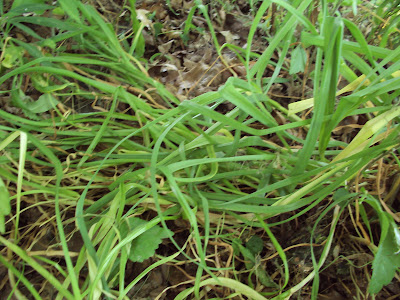SCALLION
Wild Green Onion
Species: Allium
Risk: None, Edible and Delicious
These plants go by many names. People call them yard onions, green shallots and baby onions. These wild edibles can be found all over the state, from wooded areas to backyards. Their bulb grows underground while and their stalks grow above it. These stalks can be anywhere from five inches to two feet long.
As the Scallion grows, its stalks sprout more and more layers that split off and become leaves. These layers allow the onion to protrude upward to gather sunlight. However, sometimes a stalk becomes too large or weak to support itself and can be found leaning or laying down.
The bulbs of the Scallion are roughly the size of a small marble. They are usually found two to four inches below the soil. If you intent to harvest, it is recommended that you dig down to reach them rather than just pulling on the stalk. This can result in ripping the stalk off at ground level and leaving the bulb buried.
The small roots at the base of the bulb can make removal difficult. Yet, successfully harvesting these small wild onions is well worth the effort as they can liven up any meal with their wonderful flavor.
NOTES
DO NOT eat wild onions, or any other edible, that you find growing wild in town or on someone's lawn. Harmful chemicals and pesticides from city utilities and lawn maintenance can taint the soil, rendering any wild plant growing there unsafe to eat. Always remember that good judgement is paramount when foraging for food.
PREPARING WILD SCALLIONS
First, rinse off all dirt and grime from the entire plant using clean water.
Once clean, gently pull off the tough outermost layer of stalk and leaves from the stalk and bulb. This will remove remaining dirt and reveal the tender inner stalk.
Use a knife to sever the root base from the bulb.
Discard the roots and any dried or dead tips and from the ends of the stalks.
Dice the entire plant. The wild Scallion is a great find because nearly all of it can be consumed.
Serve and enjoy.
































.JPG)
.JPG)




